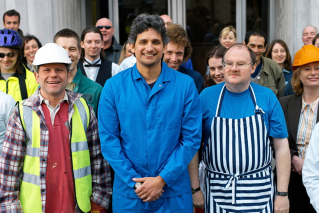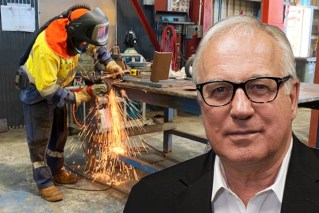Zombies brought to life, thanks to crowdfunding
A real life zombie game and a $50,000 frozen custard machine are the kinds of quirky projects that inspire strangers to invest their own money to make them happen.
The creators of these left-field ideas turned to online crowd funding to turn their dream into reality.
In its basic form, crowd funding means creating a campaign with a specific funding target on a website such as Pozible, and asking people to donate money to support you.
It is often used by people who can’t get funding through traditional sources, like banks and investors.
Even if your project isn’t as quirky as real-life zombies, here’s a dummies’ guide on how to crowd fund your vision from $0 to reality.
Step one: Decide if crowd-funding is right for you
There are no rules when it comes to the types of crowd funding projects that work. In Australia, one of the more popular campaigns has been for a real life zombie game. The Melbourne-based real world zombie game, IRL Shooter, in which players used laser tag weapons to fight actors dressed as zombies, aimed to raise $10,000 — but instead made $243,000.
Pozible co-founder Rick Chen says that while musicians, artists and creative projects were early adopters, food businesses are now also becoming common.
Sports funding is also a focus of two crowd funding websites – but it’s unlikely you’ll see any swimmers or footy players – unless they are women. The most notable on Sportaroo is the Australian bobsled team lobbying for a new sled. The poor guys had been using one from 1998.
So no matter your dream project – go for it.
Step two: Choose a platform
For general projects, Pozible has raised more than $15 million in Australia, making it the largest in the country and third largest in the world, while Kickstarter, one of the world’s largest, is launching in Australia on November 13. There’s a bunch of smaller enterprises too, including Sportaroo for sports people, Jumpstartz for entrepreneurs and Start Some Good for not-for-profits.
Step three: Describe your project
The entrepreneur describes the project and why the funds are needed. The punter is able to donate money usually based on a reward system. If the target is reached, the money is kept by the project, if it falls short the money is returned to the punter.
Step four: Explain where the money is going
People aren’t going to invest in something they don’t understand. You’ll need to make it very clear what the money is going towards, how it will be used and what they’ll get in return.
As a person looking to help a project it’s important to note how and when the money will be used and to only invest if you are sure that’s what they are really going to do.
Step five: Approach people you know
Before you get the outsiders, you’ll need to convince the insiders, says Pozible’s Mr Chen.
“Normally before 30 per cent you won’t see strangers from outside your circle,” he says.
“It all comes down to community. It is good to start early before your crowd funding campaign begins, as it’s not only an activity that you do to benefit crowd funding.”
He says the stronger your initial backing – the more successful your campaign will be.
Step six: Offer your supporters something in return
No, your success is not enough for other people. Most of the crowd funding platforms run on a rewards basis.
Mr Chen says it’s about creating a sense of ownership.
“Think about the rewards, and allow the audience to be a part of the project,” Mr Chen says.
“That’s what excites people – to be a part of something rather than wait to receive something from it.”
For example, if you donate $1 you’ll get something small, and the larger the donation the bigger the reward. Adelaide’s popular Burger Theory raised $28,500, $3000 more than its target, to import a frozen custard machine from the USA – if you donated $39 you got a t-shirt while $5000 saw your name in neon lights permanently above the machine.
Step seven: Figure out your target audience
Its unlikely a huge cache of investors is going to fall out the sky, but they are out there in the wild web. It’s a matter of attracting them.
Mr Chen’s advice is to look for communities that would be interested.
“If I’m doing a film about a topic, for example eating oranges, I need to find a group eating oranges; if they are eating bananas it’s not going to work.”
Of course, it’s also important to promote your campaign through real life contacts, social media or email to build momentum and get a following.
Step eight: Spread the word
Aside from the project itself, Pozible’s Mr Chen says a lot of people crowd fund for publicity through both media attention and social media.
“Normally you spend money for publicity but through crowd funding you can be raising money and getting publicity at the same time,” he says.
“People love projects and share them to be part of something that’s successful.”
Step nine: Don’t forget to have fun
Crowd funding, while often for a serious business venture, works best when it’s a bit of fun. Case in point: the musician who crowd funded $22 for a “Pint and a Parma” – he achieved well over his goal and met a new community in the process. For a dollar he’d think about you when he had his beer or for $22 you could come and have one with him.








